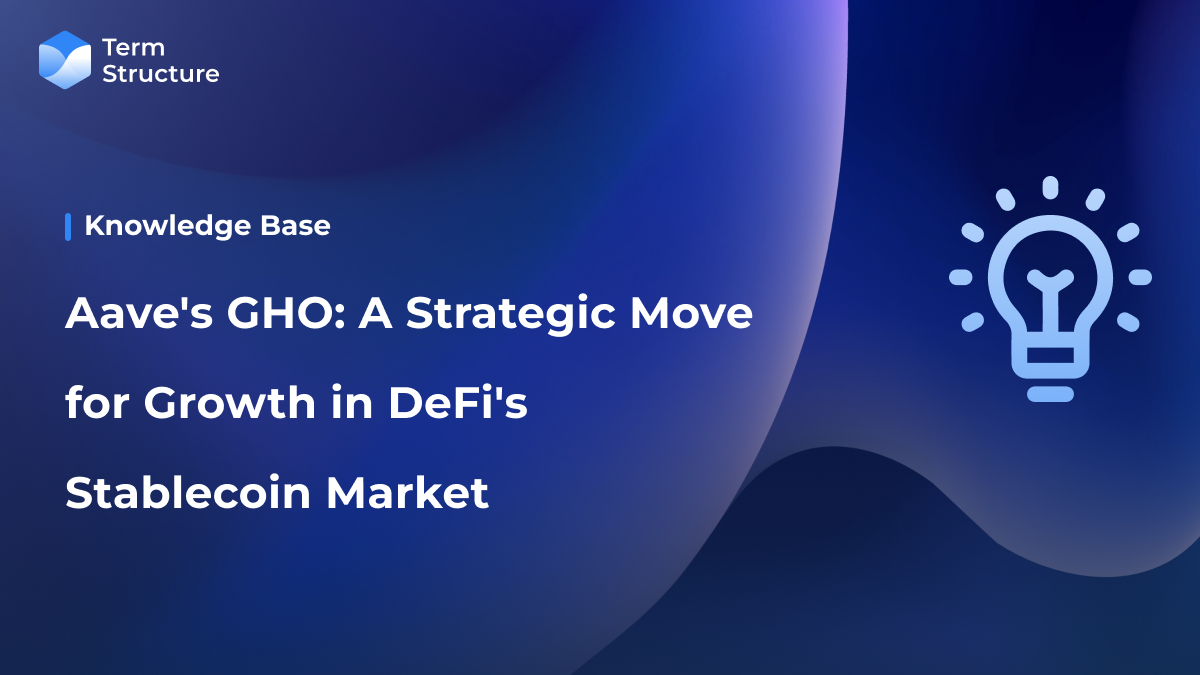Aave's GHO: A Strategic Move for Growth in DeFi's Stablecoin Market

Introduction
Aave is a prominent decentralized finance (DeFi) lending platform that leverages peer-to-peer (P2P) liquidity pools to establish robust cryptocurrency borrowing and lending markets. Renowned for pioneering the concept of "flash loans," Aave has earned its place as one of the most substantial money markets in the DeFi space. According to DeFiLlama, Aave has a Total Value Locked (TVL) of $7.77 billion as of today. To diversify revenue streams and solidify its position in the DeFi lending market, Aave launched its native stablecoin, GHO (pronounced as "GO"), on July 15th. This article seeks to provide a comprehensive overview of GHO, its operational mechanisms, and the benefits it brings to the protocol.
What is GHO and How Does It Work?
GHO is Aave's over-collateralized stablecoin, designed to maintain a steady value of $1. The creation ("minting") or liquidation ("burning") of GHO is executed by approved entities known as Facilitator, who play a vital role in implementing strategies for the GHO borrow rate. Each Facilitator is assigned a Bucket, which has an upper limit for the amount of GHO it can supply. Currently, the Aave V3 Ethereum and FlashMinter Facilitator serve as the initial facilitators, statistically adjusting interest rates to manage GHO supply expansion or contraction. This is achieved by deploying InterestRateStrategy smart contracts to ensure the maintenance of the price peg.
Different from other cryptocurrencies, GHO does not rely on a price oracle to determine its market value. Instead, its value is hardcoded to always remain 1:1 to the US dollar on the Aave protocol. Hence, borrowers can consistently access, repay, and liquidate GHO at a stable value of $1. This unique feature creates arbitrage opportunities for borrowers whenever GHO deviates from its pegged value. For instance, when GHO trades above $1, users are incentivized to borrow/mint GHO on the Aave protocol and sell it at a premium elsewhere. By contrast, borrowers are motivated to acquire GHO from the open market to close out their loans when GHO trades below $1. These strategic mechanisms ensure GHO's price returns to its intended peg.
Furthermore, the Aave-GHO integration brings an innovative feature that enhances utility for Aave Governance and community participants: the Discount Strategy mechanism. This feature enables Safety Module participants, who stake AAVE tokens in the Safety Module smart contract to safeguard against short fall events, to enjoy a 30% discount on the GHO borrow rate when they hold a minimum of 100 GHO.
Where Is Aave GHOing With This?
The launch of GHO was a strategic move for Aave for several reasons. Unlike other cryptocurrencies in which interests are paid to liquidity providers, GHO can become a new revenue stream for the protocol because the interest paid is automatically funneled into the Aave DAO treasury. To put this into perspective, let’s take a look at MakerDAO, a direct competitor of Aave in both the stablecoin and money markets as MakerDAO launched its lending platform, Spark Protocol, for DAI holders in May. According to DefiLlama, DAI, the native stablecoin of MakerDAO, currently has a market capitalization of $4,053 million. As the annual interest rate of GHO is 1.5%, this stablecoin is estimated to generate an additional $60 million for the AaveDAO, using the DAI market capitalization multiple. This presents an enormous potential for revenue growth.
Moreover, Aave can use GHO's reserves in the treasury for investments or funding other projects. For example, RealT, a protocol that tokenizes US real estate, enables users to acquire fractional ownership. RealT established a liquidity pool on Aave in late 2020 to allow users to stake their tokenized real estate as collateral. Having a native stablecoin opens more opportunities like this to onboard RWA to the protocol’s ecosystem. With GHO, Aave can expand its community and onboard Real-World Assets (RWA) onto its protocol. This strategic move strengthens Aave's position in DeFi and enhances its ecosystem's potential for sustainable growth.
Concluding Thoughts
Although Aave's new stablecoin model may not be a groundbreaking innovation, the introduction of GHO holds significant promise for the protocol. Even with conservative estimates, GHO's borrowing fees have the potential to generate millions in additional revenue for Aave. GHO's impact and future opportunities in the Aave ecosystem and beyond will soon become evident because it could solidify Aave's leading position in the DeFi money market.

